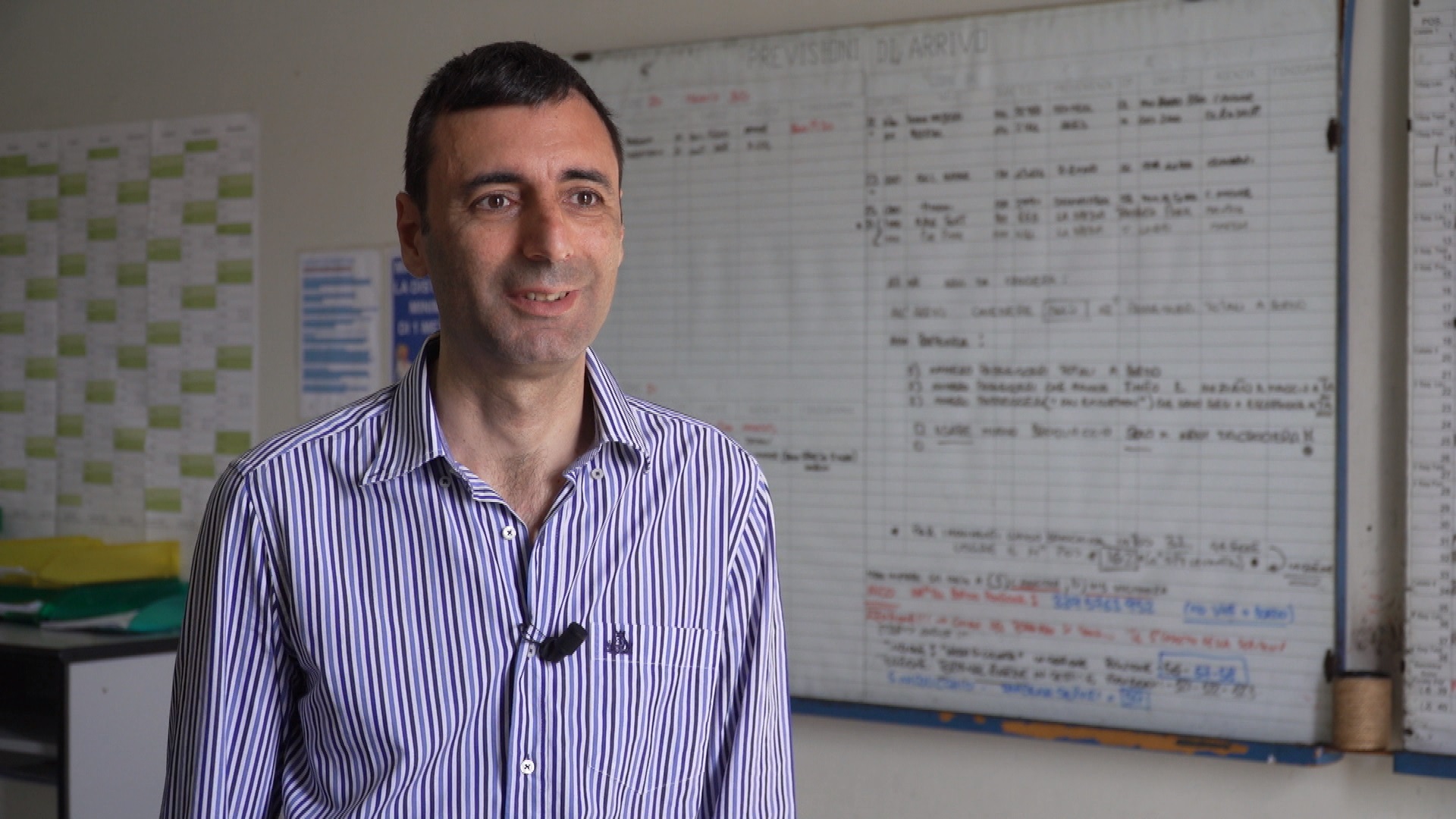Avvisatore marittimo interview
The Maritime Warning Service
Fabio Morello, Maritime Warnings
The maritime lookout is a port service that is provided in the main Italian ports, where the number of ships justifies, naturally, its existence, economically.
Its fundamental task – as defined in the regulations – is to carry out the ship sighting service, which is necessary to establish a reliable chronology of ship movements in port and to identify the quality and type of operations being carried out.
Simona Morello, Legal Representative, “Maritime Warnings”
The role of our service is to acquire the data of all ships entering and leaving the port of Taranto.
We have seven staff, and this data is sorted and sent to the harbour office and simultaneously to the agencies that deal with ships entering the port.
Just as the port is open 24 hours a day, so our service is expected to be, too.
This is the newspaper, we can call it a newspaper, that we publish every day: it is the status of the port that we send to all the workers in the port of Taranto.
It is a fundamental source of information that keeps the entire port community up-to-date on what is going to happen, and what is happening, in the port.
Ivon Morello, owner of “Maritime Warnings”
The history of the Maritime Warning Service in Taranto
The maritime warning service was established almost 30 years ago.
I used to work in a shipping agency, and so I saw that we gave all the ships’ schedules and so on to the Harbour Master.
There was a “blackout” in the agencies when Riva came in, took everything away, and practically all of us were left without work.
Since I was already doing this kind of work, I inquired in the ports how it was going, especially Livorno where I’d gone, and they explained to me that the work I was doing at Gennarini’s, I could do by myself.
So I said to myself, this is a new job for Taranto and I opened the office and started working.
We also do a job for the shipowners, because we record the times when the pilot goes on board, when the tugs go, if they use the cables and all these other operations, we certify them and send them to the shipowner.
So there have been no discrepancies in payments to port services ever since.
The maritime signalling system began some 300-350 years ago, and it was the port of Naples that did it first.
Before, people used to go by boat to see the mooring company when the work was finished, and so on.
Now you don’t go any more, however if you had to certify, there was no third party to say “Gentlemen, I’ve got them and these are the ones”.
In the registers, the historical memory of the port
On this side, in contrast, we have all the registers that bear witness to our work over the years.
This is the historical memory of the port of Taranto as far as we are concerned, from 1997 onwards.
Each of these registers contains notes of all the ship movements – I’ll take some at random – of all the movements that have taken place in the port, together with a record of the particular events that sometimes have occurred – as here, for example, there is one that took place on the 3rd of January 2007 – here is the note of the employee on duty, who at 1am during the night shift indicated that the port was closed due to excessive wind.
Specifically, I read that this Chelyabinsk had run aground probably due to high winds, and that they were waiting for daylight for the mooring crews to intervene.
Then the port was reopened at 3:45 a.m. on 3/01/2007, in short everything that had happened as well as what followed, then if we move forward in time we’ll see how this situation was resolved.
The tools of our trade
Essentially we are dealing with radio communication equipment.
Then we have optical sighting devices, of course binoculars, telescopes.
But with all the electronic devices that exist today they are of course only an almost exclusively historical legacy of our work.
And today, generally, we essentially use AIS.
The AIS is a technology that is based on VHF radio transmissions, it basically consists of a transmitter that is on board every ship that is obliged, beyond a certain tonnage, to have this instrumentation on board with which it transmits data relating to itself and data about its position and the course it is following.
It was created essentially for safety purposes, to allow ships that were crossing paths to have data about one another’s position and course.
I think it’s a really fascinating, unique job.
You have to deal with the sea, with the ships, with everything that revolves around the port, so it’s a dynamic situation and then, anyway, it’s a world that those who work outside don’t know about, but those who work on the inside always discover many fascinating peculiarities.
*** Automatically generated subtitles ***


